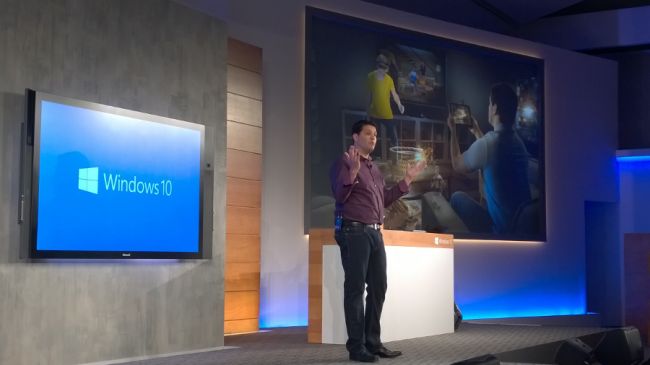The highlights from Build 2015
While we didn’t get that coveted Windows 10 release date or a look at the first ever Windows 10 devices, Microsoft did offer quite a few meaty nuggets of info during its Build 2015 conference at the Moscone Center in San Francisco, Calif.
On Day Two of the conference, Microsoft didn’t have as much big news to offer up. It’s not necessarily surprising, given the developer bent of the show, but nevertheless deflating. That said, a few interesting developments did come out of the second keynote.
For starters, Microsoft announced that Windows 10 is now available on the Raspberry Pi 2 micro computer and Intel Minnowboard Max. Some specific tailoring had to be done to fit the operating system on these tiny machines, resulting in this version of OS earning the name Windows 10 IoT Core. Folks can test out the special software now, as your feedback is sorely needed.
Then, Microsoft showed off a demo website showing the company’s Machine Learning and face recognition platforms at work. Called How-old.net, the goofy site takes photos of people and, based on several factors, attempts to guess how old those people are. It’s not exactly foolproof, but it’s also just a demo.
Finally, we got some quality hands on time in with Edge, Microsoft’s official name for the Windows 10 browser. It doesn’t yet have those fancy features that were shown off on the Build 2015 stage, but we were able to play with the Inking and sharing features. The early verdict? Unsurprisingly, it needs a lot of work.
On the first day, Microsoft EVP of Operating Systems Terry Myerson surprised the crowd when he announced that Windows 10 will support apps written foriOS and Android. That is, with some reworking, of course. Still, this will undoubtedly blow the Windows 10 app store wide open.
When Microsoft Corporate VP of Operating Systems hit the stage, he immediately dove into a host of minor –but very welcomed – tweaks to the Windows 10 interface design. First, the Live Tiles within the new Start menu are now animated as they were in Windows 8 to bring it more life. Second, that same Start menu is now slightly translucent, much like window panes were in Windows 7 through its Aero Glass feature.
Belfiore then went into changes that are incoming to the Windows 10 lock screen. He detailed some updates to the Spotlight feature, a more service-driven, personalized and lively take on the lock screen. In Windows 10, this screen will allow users to choose what kind of images appear on that dynamic screen by choosing their favorites.
More importantly, Spotlight in Windows 10 will suggest apps and tools that users may not yet have used yet. Belfiore used the example of Cortana, Microsoft’s voice-based virtual assistant. If a user had yet to use the feature on a fresh install of Windows 10, the system will soon recommend that he or she check it out and make that easy to with some custom buttons.
Speaking of which, Cortana will soon serve up information based on how people search the web and how they use their PCs. The Cortana interface will also serve up suggestions for new apps based on what people search for, too. Finally, Cortana will be able to interact with apps through just voice control – Belfiore on stage had the tool send someone a message through Viber without pressing a button.
Then Belfiore let loose the official name for Project Spartan, the new and improved default browser for Windows 10: Microsoft Edge. He than went on the detail the New Tab, a more interactive page for the “new tab” function used a billion times a day by browser users. The new, New Tab will feature a search bar followed by a collection of the top sites that you visit, below that will be a collection of news stories by partner websites, not to mention weather, suggested apps and a sports ticker.
Finally, Belfiore detailed how Microsoft’s Continuum works on Windows 10 for phones. After hooking a Windows phone up to a monitor using mini HDMI and connecting a Bluetooth mouse and keyboard, the interface on the phone immediately adapted to the new environment in a desktop orientation.

